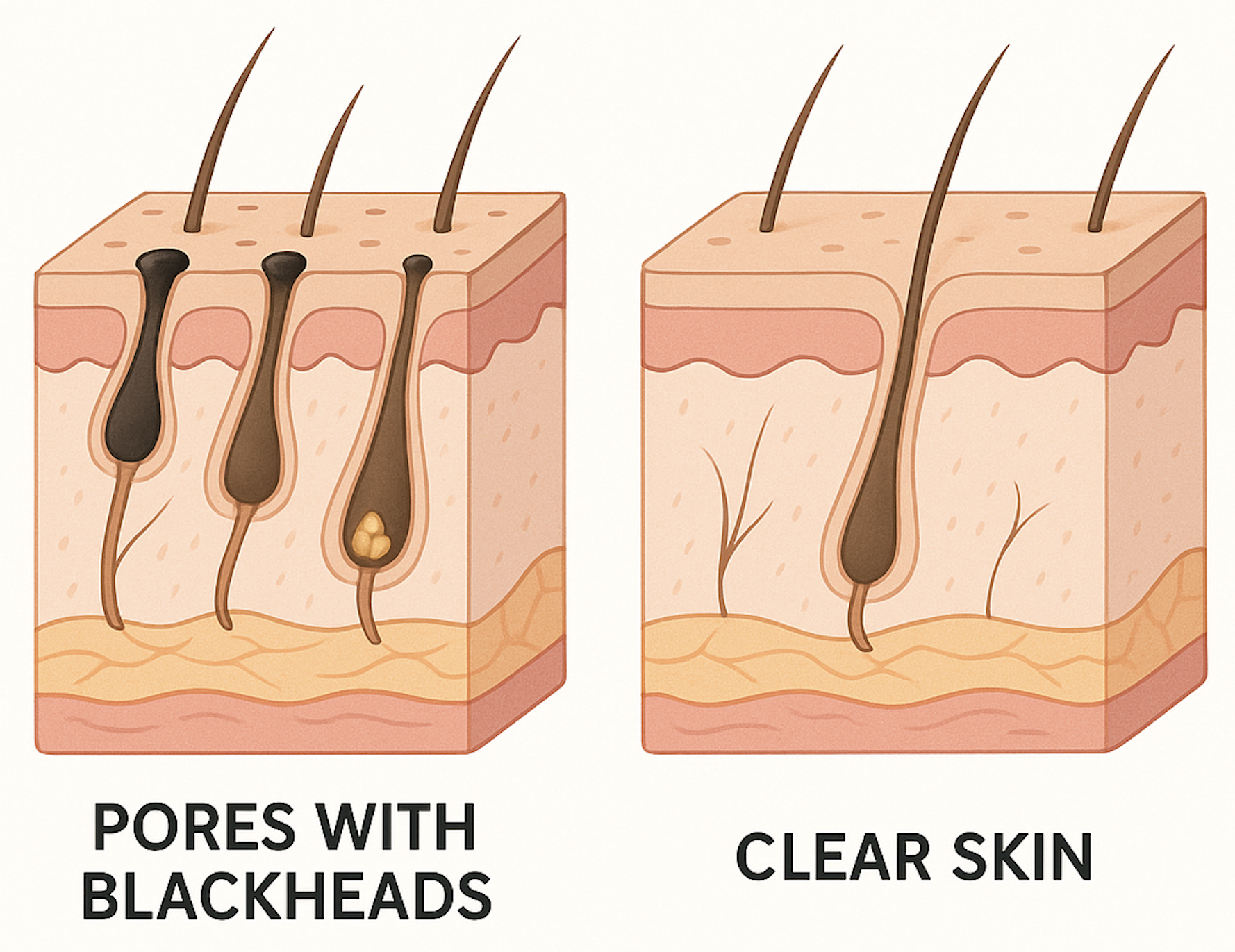Blackheads vs Whiteheads: What's the Difference and How to Treat Them
The complete guide to identifying and treating these common skin concerns

It's surprisingly easy to mix up blackheads and whiteheads. I used to think they were pretty much the same thing—just clogged pores, right? But the truth is, while they're similar, there are some key differences that matter when it comes to getting rid of them.
Once I understood the difference, it became a lot easier to take the right steps to treat them and actually see improvements. So if you're confused about what's what and how to handle each one, you're definitely not alone.
What Exactly Are Blackheads?
Blackheads are those tiny dark spots that show up when a pore gets clogged with oil and dead skin cells. But here's the part that always surprised me—they're not dirt.
- • The dark color is oxidation (exposure to air turns the clog black)
- • Medically called "open comedones"
- • Common on nose, chin, and forehead (the T-zone)
Key Insight: Despite their appearance, blackheads aren't caused by poor hygiene—they're simply pores that got clogged and then oxidized.
What Makes Whiteheads Different?
Whiteheads are "closed comedones"—similar to blackheads but with one crucial difference: the pore's opening remains sealed. This prevents oxidation, keeping the clog white or skin-colored.
Unlike blackheads, whiteheads often feel like small bumps under the skin rather than appearing as obvious dark spots.
Where They Appear
While blackheads favor oily zones, whiteheads frequently appear on cheeks and jawline. Hormonal fluctuations often trigger them, which is why many adults still deal with whiteheads.
Blackheads vs. Whiteheads: Key Differences
| Characteristic | Blackheads | Whiteheads |
|---|---|---|
| Pore Status | Open (oxidized) | Closed |
| Appearance | Dark spots | Small white bumps |
| Common Locations | Nose, chin, forehead | Cheeks, jawline |
| Main Cause | Oil + dead skin oxidation | Trapped oil + bacteria |
| Ease of Extraction | Easier (open pore) | Harder (risk inflammation) |
How to Treat Blackheads Effectively
Best Ingredients:
- • Salicylic Acid (BHA): Oil-soluble, penetrates pores
- • Retinoids: Increase cell turnover
- • Clay masks: Absorb excess oil
Application Tips:
Gentle Cleansing
Twice daily with a non-drying cleanser
Chemical Exfoliation
2-3 times weekly with BHA
Non-Comedogenic Moisturizer
Even oily skin needs hydration
Avoid Pore Strips
While satisfying, they often damage the skin barrier and don't prevent blackheads from returning. I learned this the hard way after overusing them in college.
Whitehead Treatment Strategies
What Works Best
- • Benzoyl peroxide (2.5-5%): Kills bacteria without overdrying
- • AHAs (glycolic/lactic acid): Gently exfoliate surface skin
- • Warm compresses: Help bring clogs to surface naturally
Personal Experience
I used to aggressively scrub at whiteheads, which only made them angrier. Switching to chemical exfoliants and spot treatments with niacinamide made the biggest difference in calming my skin.
Prevention: The Real Game-Changer
Lifestyle
- • Change pillowcases weekly
- • Clean phone screen regularly
- • Shower after sweating
Products
- • Non-comedogenic labels
- • Oil-free sunscreen
- • Double cleanse at night
Consistency
- • Stick with routines 6-8 weeks
- • Don't overdo actives
- • Patch test new products
My Top Product Picks for Both Concerns
Final Thoughts: Patience Pays Off
Blackheads and whiteheads might look similar, but once you understand their differences, you can target them more effectively. The key is consistency—both respond best to steady, gentle care rather than aggressive treatments.
Remember that clear skin isn't about perfection. Even with the best routine, you'll still get the occasional clogged pore. What matters is having the right tools and knowledge to handle them when they appear.
Continue Your Skincare Education
Struggling with persistent blackheads or whiteheads?
Get Personalized Skincare Recommendations